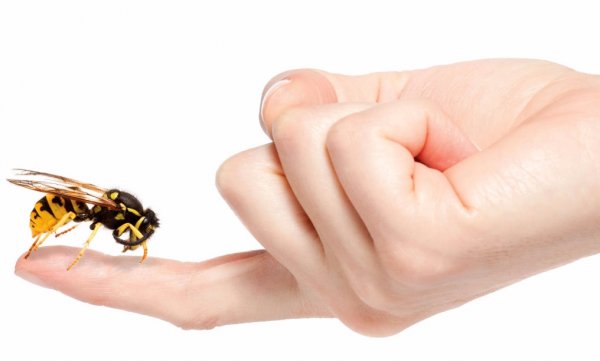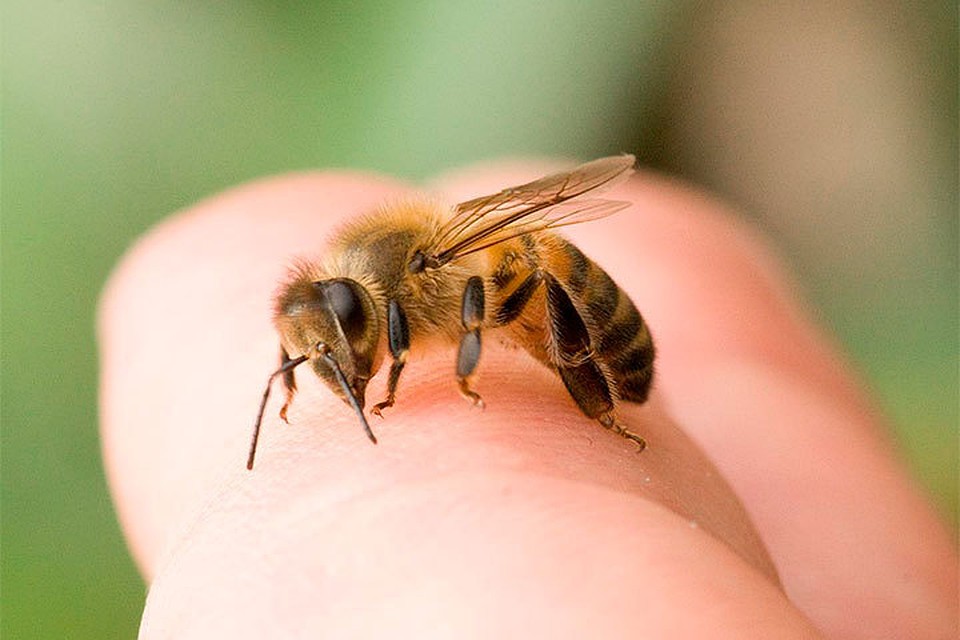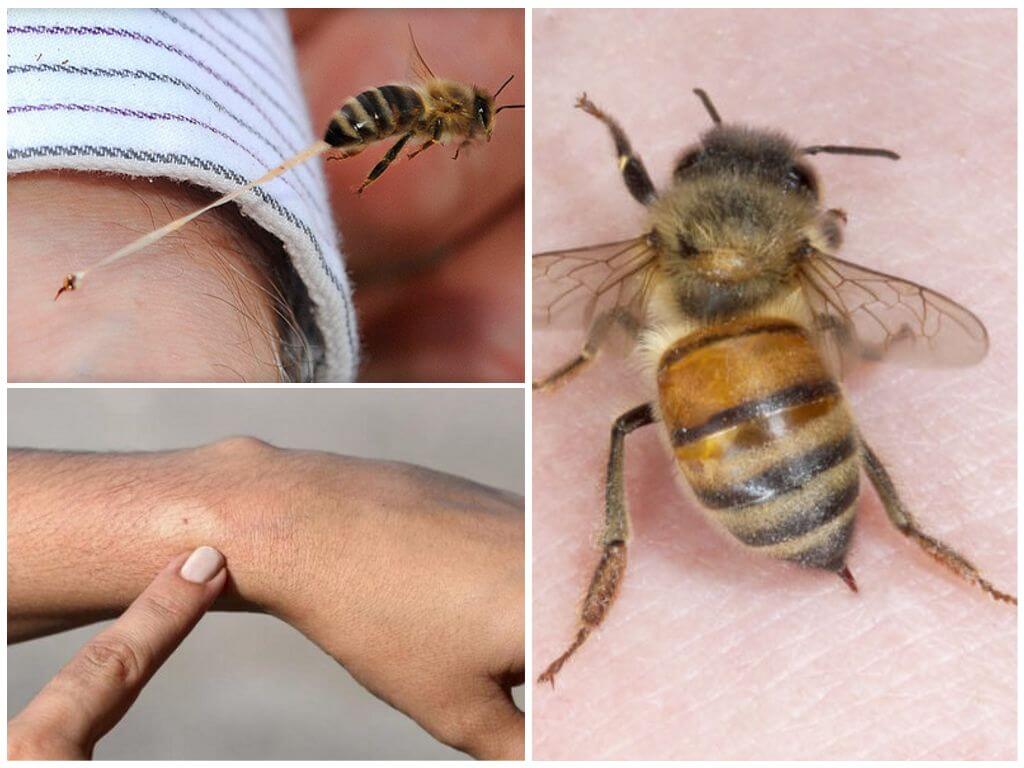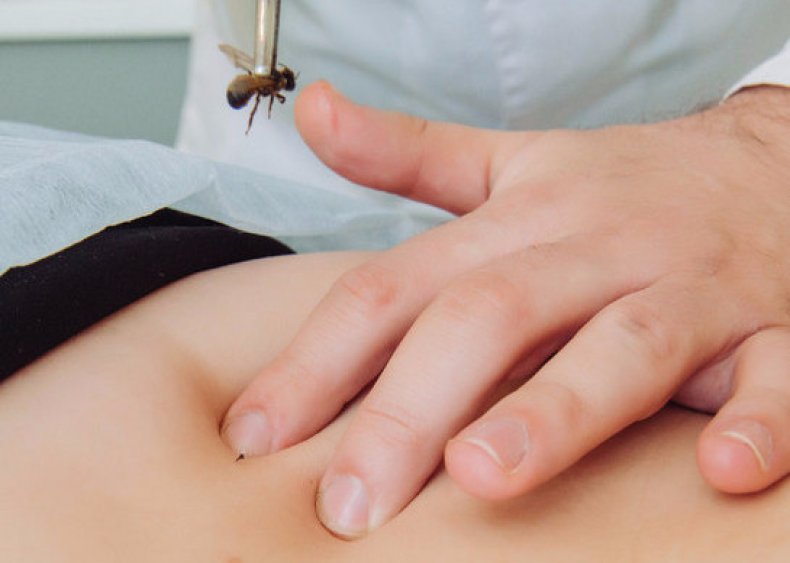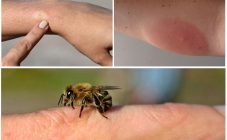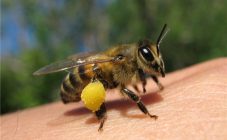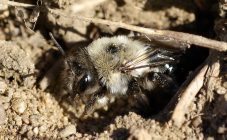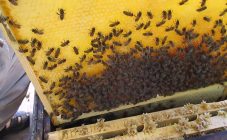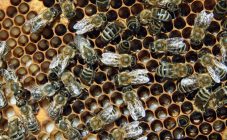A bee sting, from a biomedical point of view, is similar to the effect of a disposable medical syringe with a unique natural medicine of enormous healing potential. A small dose of bee venom contains up to 50 types of complex chemical and mineral substances, which together create a universal therapeutic effect on the human body.
It contains complex chemical compounds - peptides, which include amino acid residues with different healing properties:
- The substance melittin has anti-inflammatory properties that can kill harmful bacteria.
- Adolapine in its analgesic effect far exceeds the action of the well-known opium and aspirin.
- Apamin has a beneficial effect on human nervous activity, soothes and tones.
- Cardiopeptide regulates the cardiovascular system.
The most important usefulness of bee venom is elimination of the causes of chronic diseases and activation of protective physiological processes in the human body.
Is there any benefit
Treatment with bee stings by humans is not always perceived unambiguously. A burning sensation and instant severe pain at the moment of sting by bees is unlikely to please anyone. The ability to bite and sting belongs only to females after the accumulation of bee venom in special tanks.
To understand how a bee sting is useful, you need to familiarize yourself with the therapeutic effects of the poison. Once in the human body, bee venom improves metabolism, restores the cardiovascular system, normalizes lymph microcirculation and improves hormonal levels.
Bee sting treatment at home
Recently, many people are starting to pay great attention to natural medicines. An interesting trend has emerged to treat many diseases in unconventional ways. This explains the increased interest in bee therapy and in what this direction is called.
According to medical terminology, medical therapy with bee stings is called "apitherapy". This word comes from the Latin "apis" - bee and means the use of bee products for medicinal purposes.
In order to carry out treatment at home, it is advisable to obtain medical advice, as a result of which the indications for the use of this procedure will be determined. If no contraindications are identified, then you should begin to be treated with bee stings gradually, starting from two to three stings. If this procedure is well tolerated, it is possible to increase the number of "bee stings" in each subsequent session.
Before starting treatment with bee stings, you need to determine the reaction to the sting. For this purpose, an insect is planted on the lumbar region for a few seconds, it plunges its sting into the human body.After the initial procedure, it is necessary to pass blood and urine tests in order to find out if there are any disruptions in life. If there are no allergies and side undesirable effects, the procedure of "bee pruning" is repeated, increasing the residence time of the sting to 1 minute. After these trial "injections" you can start treatment.
There are several subtleties of bee therapy:
- Bite bees should be placed on different points of the body every day.
- Two weeks after the start of treatment, it is necessary to take a break, then bites are resumed again and their number is tripled.
- The procedure begins by cleaning the application site with water and soap.
- With the help of tweezers, the bee is applied to the intended point for a bite for a few minutes, then the sting is pulled out and the bite site is treated with boric petroleum jelly or an aqueous solution of hydrogen peroxide.
- Due to the temporary rush of blood to the wound after the procedure, it is recommended to lie down for at least half an hour.
For apitherapy to be successful, it is necessary to exclude heavy physical exertion, the use of alcoholic beverages during treatment and adhere to a healthy lifestyle.
Benefit and harm
The decision on apitherapy treatment is usually associated with the question: what is the benefit of a bee sting for humans, about its benefits and harmful side effects. The effects of a natural bee venom medicine are multifaceted. It is beneficial in case of detection of inflammatory processes, prevents the development of harmful bacteria, increases the number of red blood cells. Bee stings help normalize the peripheral and nervous systems.
There are a number of contraindications to the use of bee therapy:
- Individual intolerance and allergy to bee stings.
- Chronic diseases of diabetes, tuberculosis and pathologies of the liver, kidneys, pancreas.
If, after a bee sting, the temperature rises, or severe redness appears on the skin, then it is not recommended to be treated using this method.
What diseases does it help
After getting acquainted with the general methods of apitherapy and the concept of "what is useful for a bee sting", it is recommended to find out in what diseases and in what areas of medicine this technique helps:
- Oncological diseases.
- Cardiology.
- In the treatment of varicose veins.
- Neurology.
- Prostatitis.
- Rheumatism and sciatica.
- Bronchial asthma.
- Treatment of eye diseases.
- Dermatology.
The therapeutic potential of this exotic therapy has not been fully studied, it has not received proper approval from official medicine. But beekeepers-beekeepers, among whom more than 80% are long-livers, are considered a striking visual example of the beneficial effects of bee stings.
